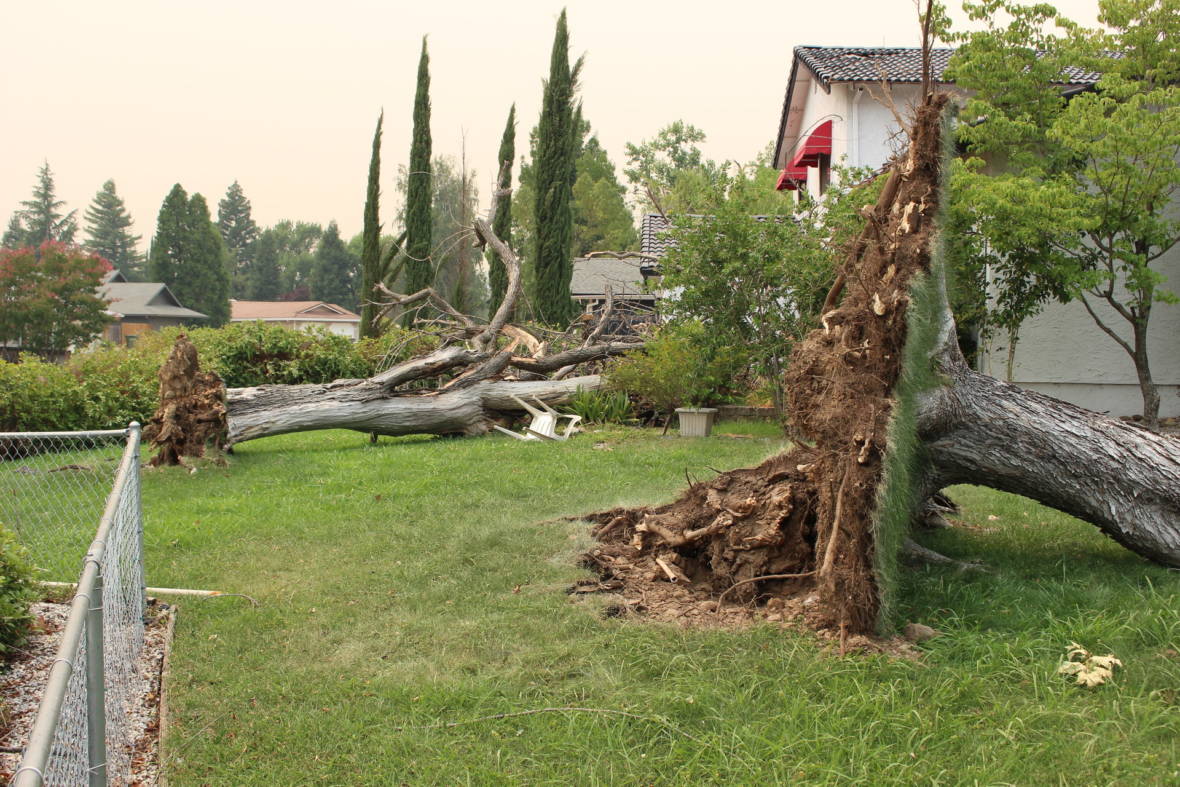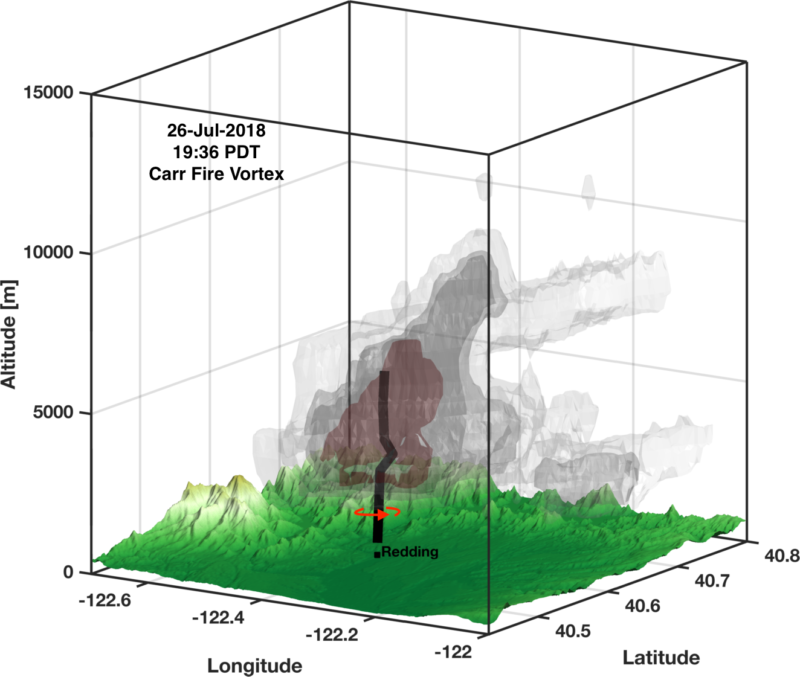Redding's
Fire Tornado Was Not Your Garden Variety Fire Whirl

On
Thursday evening, the
Carr Fire exploded into
the outskirts of Redding, blazing through everything in its path.
By
the next morning, through images and video posted online, the world
could see the force that had driven the fire’s leap across the
Sacramento River and rapid spread into the city: a massive, rotating
cloud of smoke and ash and flame. ABC10, which posted
one of the most widely shared videos on Twitter,
said it wasn’t a tornado. But it sure looked like one.
It
was a fire whirl, also known as a fire devil, fire vortex, fire
tornado, or “firenado.”
A
fire whirl is any intensely rotating column of heated air that rises
from a wildfire, according to Neil Lareau, an atmospheric scientist
at the University of Nevada, Reno.
It begins to form when air starts to rotate, usually near the surface of the earth. The air is very hot because of the fire, but also due to the hot ambient air temperatures that set the stage for the fire in the first place. Heat rises, so that spinning air at the surface gets stretched high into the atmosphere, forming a rotating column of hot air that pulls ash and flame along with it.
What causes the rotation in the first place?
“That’s
the part we don’t really know,” says Lareau.
Fire
tornadoes are just one type of extreme fire behavior that may be
exacerbated by climate change.
Rotation
can be driven by differences in wind speed or temperature, caused by
features of the local environment: the terrain or an obstacle on the
ground. But researchers don’t understand this part very well, and
it’s difficult to pinpoint what exactly started the rotation at the
Carr Fire.
What
happens when the rotation rises into the air is better understood.
The rotation becomes concentrated in that column. Lareau likens it to
a whirling figure skater who puts their arms up over their head to
spin faster.
"They
kind of concentrate that rotation, and make it stronger. And the fire
is doing this huge vertical boost to that rotation that may have been
at the surface," he explains, "It's starting to look more
like a tornado than your garden-variety fire whirl."
Usually,
meteorologists take issue with describing fire whirls as "fire
tornadoes" because they form differently, and fire whirls are
usually made up of much weaker winds than tornadoes. Last Thursday,
though, seeing the aftermath with roofs ripped off of homes and large
trees completely uprooted just outside the burn zone, even the
weather experts were tempted to describe the Carr Fire whirl as a
tornado.
Fire
whirls are not an uncommon sight at a wildfire. But they're usually
small, up to 1,000 feet high, and last only minutes or even seconds.
On Thursday night, the fire whirl outside of Redding stretched to
about 18,000 feet into the air and lasted for nearly an hour, and
winds were clocked near the lower end of tornado-strength wind
speeds.
"It's
very rare as well to have these really persistent long-lived events
like that, " says Lareau, "To get a big one like this is
really scary."
Fire
whirls are dangerous not only because of the strength of the winds
involved but because they lift embers high into the air, where
higher-altitude winds can carry them far from the flaming front.
That's one way that fires get past what should be major barriers --
like the Sacramento River.
 A
3D visualization of the 'fire tornado' at the Carr Fire on the
evening of July 26. (Neil
Lareau)
A
3D visualization of the 'fire tornado' at the Carr Fire on the
evening of July 26. (Neil
Lareau)
Lareau
says that other fire whirls on this scale have occurred in Northern
California in the recent past, but not in densely populated areas
like Redding. Big fire whirls may have played a role in the spread of
last year's Thomas
Fire and
North Bay Fires -- counted as the state's largest and most
destructive on record, respectively -- but the fire whirls were not
on the same scale, and those fires were mostly driven by regional
Santa Ana and Diablo winds.
Scientists
are really just starting to learn about fire whirls, and are a long
way from being able to predict the occurrence of major fire whirl
events -- but they can identify the ingredients that make such an
event more likely. The topography of the area is part of it. And the
heat, which reached 113 degrees in Redding last week.



No comments:
Post a Comment
Note: only a member of this blog may post a comment.